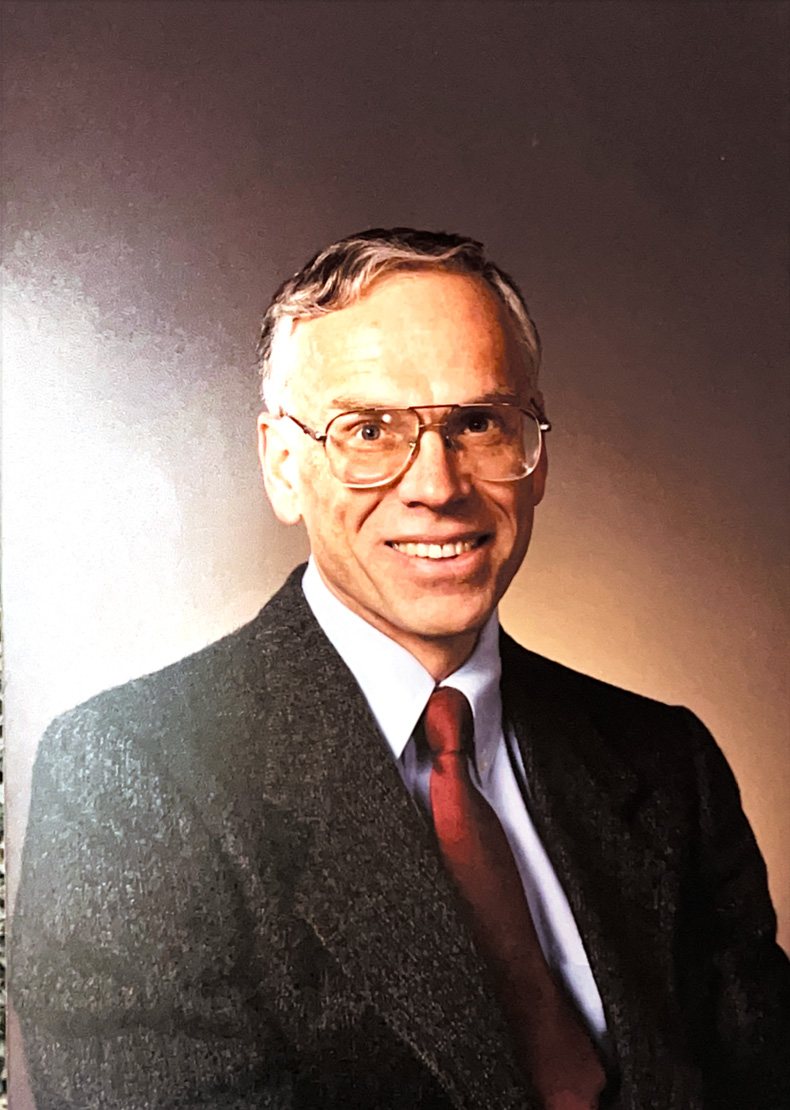
In the latter half of the year 2000, Professor Peter B. Armentrout was appointed University of Utah Department Chair of Chemistry. He earned a B.S. degree in 1975 at Case Western Reserve and his PhD. Degree in 1980 at CalTech. Peter has also done postdoctoral research at Bell Labs and had been an assistant professor of physical chemistry at the University of California, Berkeley for a few years before his appointment to the Utah faculty in 1987. While at Berkeley, Peter began his ion-beam mass spectrometry studies of metal molecule ions that continue to produce many national awards for Peter and his students. A recent representative example of Peter’s knack for identifying and fostering extraordinary student talent is the Distinguished Alumni award made by Utah in April 2014 to Professor David Clemmer, who is located at Indiana University. David earned his PhD degree (1992) working with Peter at Utah. While working since then at Indiana, David has successfully extrapolated Peter’s gas phase studies into the elucidation of protein folding issues. The challenging questions raised by Peter in student oral examinations and in visiting faculty seminars are hallmarks of what has made the science of chemistry at Utah first-class in recent years.
The election of Professor Peter J. Stang in 2001 to the U.S. National Academy of Sciences was very big news for the Department of Chemistry at Utah. Up to them there had been only one previous chemist, Josef Michl, who had begun his professional career in Utah and remained long enough at Utah to be elected an Academy member before leaving Utah. We will report the names below of more Utah Chemistry faculty members who have followed Peter Stang into the ranks of the NAS. (The late Henry Eyring and Cheves Walling were elected to NAS membership before joining the Utah Chemistry faculty, and their most notable chemical discoveries during long lifetimes were made before they moved to Utah.)
One of Peter Stang’s major chemical discoveries prior to 2001 was how to synthesize molecular structures containing metal-complex units that self-assemble into tiny machines with potential practical applications. Prof. Stang is also very highly valued for his extraordinary ability to teach young people at every level how to do creative new chemical science by his example in his laboratories and his classrooms. His skillful editing of the scientific work of other chemists preparing their discoveries for publication in the most prestigious “journal” (magazine) of the chemical profession which he edits, the Journal of the American Chemical Society (JACS), continues to have a huge positive impact on the chemical profession.
Joel S. Miller, another year after year well-funded full professor, was honored at the San Francisco national ACS meeting for his pioneering development of molecule-based magnets that will eventually replace iron and other metals in practical applications of magnetic fields. His ACS recognition is called the Chemistry of Materials Award. In addition to being one of the star scientists on the faculty, Joel has an impressive collection of science toys and covers of magazines featuring his firsts in science that make a visit to his office in the chemistry building, a rewarding pit stop. (Call ahead to make sure Joel is around before stopping by. His extensive world-wide scientific collaborations may very well have him in Japan, Israel, or elsewhere temporarily if you impulsively come calling by his office.)
The transition in the chairmanship of the Chemistry Department from Dale Poulter to Peter Armentrout was seamless. Challenges of keeping the Utah faculty young and competitive for national research dollars include recruiting new faculty who teach well, write winning research proposals, and at least tolerate living conditions in drought-stricken Salt Lake City. Dale and his colleagues had added 3 green assistant professors (John Conboy [analytical], Eric Hegg [inorganic], Matthew S. Sigman [organic]) and an experienced teacher/researcher (Greg Voth [physical]) to the faculty by the time Peter Armentrout took charge of Chemistry.
In mid-summer of 2001, Millie Trevithick passed away from Alzheimer’s. She was the ultra-dependable Chemistry Department secretary for many years when Dave Grant and later Ted Eyring were chairing the Chemistry Department.
To put the events noted above in context we recall that on the morning of September 11, 2001, terrorists used three commercial airliners to kill almost three thousand innocent people in New York, Washington D.C., and Pennsylvania. A dark undertone in the subsequent pages of this Chemistry history is the diminution of federal funding available for chemical education and chemical research since 9/11, arising from fiercely competing social and military national priorities. This task of chairing the Chemistry Department has become very challenging indeed, from the financial point of view subsequent to September 11, 2001.
